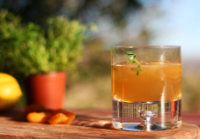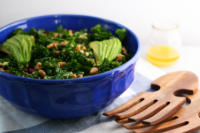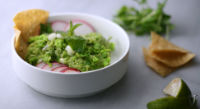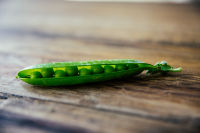Pickling vegetables in brine (salt water) - Part 1
3 Jars, 3 Pickles: How-to make lacto-fermented vegetable pickles. Try this old-fashioned, no vinegar, and sugar-free recipe.
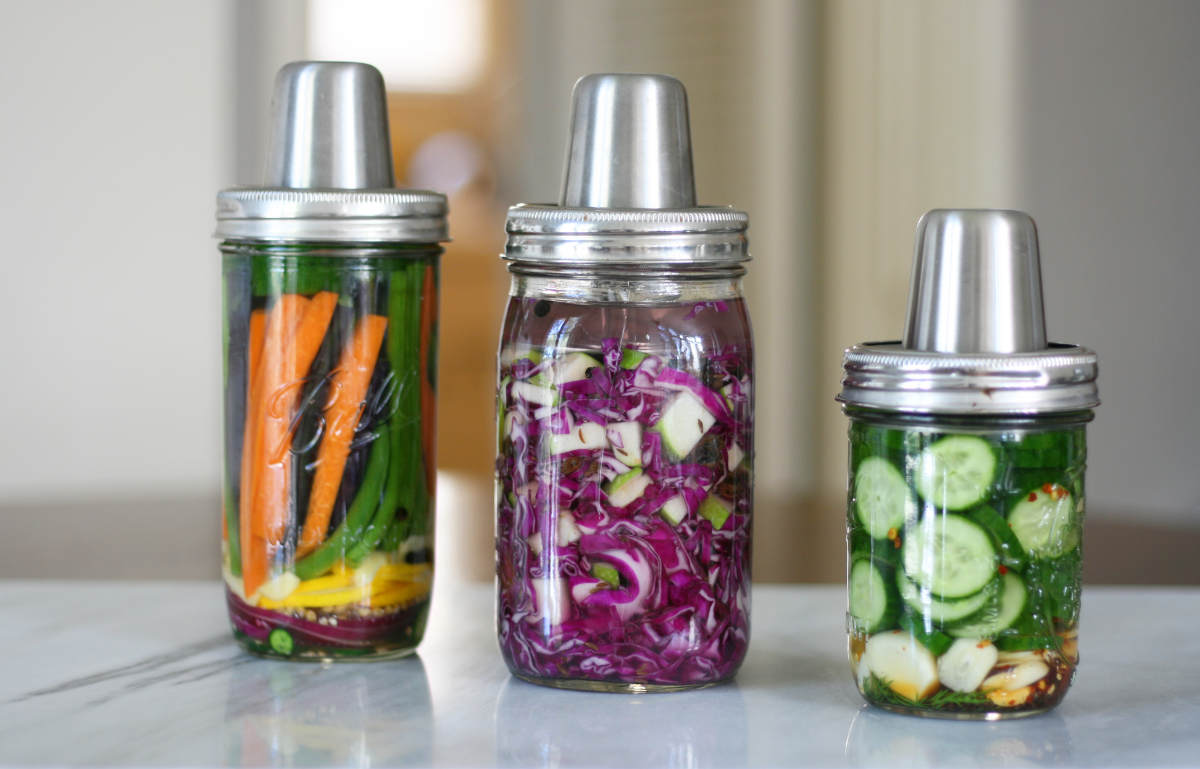
There are many ways to ferment fresh vegetables, fruits, and drinks. Every culture around the globe has some form of fermentation technique and their favorite fermented food or beverages.
This post is Part I of a 2 part series; I will be covering how to pickle vegetables using the brine - Jar 1 & Jar 3 in the photo above. Part II will focus on ruby sauerkraut using red cabbage and apples - Jar 2.
In today's post, I am going to cover and focus on brine-based natural fermentation technique. This method is super simple; It makes delicious, and nutritious pickles loaded with probiotics. All you need is some salt and filtered water. For making the brine, skip the tap water - go for spring or distilled water. Tap water contains chlorides, fluorides, and additives that may throw off the fermentation process. Also, please skip the table salt as it is typically iodized and contains anti-caking agents. I recommend using either sea salt or pink Himalayan salt instead. You can, in a pinch, use the Kosher salt.
Use the recipes below as a starting point. Once you get this technique down, experiment with your favorite fruits, vegetables, spices, and herbs. Good luck!
Tools
It is important to keep the harmful bacteria out, to create an environment that is conducive to lacto-fermentation. It takes a few days for lactic acid producing bacteria to settle in. During this time, it is important to keep out bacteria that can spoil the vegetables. The good bacteria creates lactic acid that acts as a natural preservative inhibiting the growth of harmful bacteria. As part of the process, the good bacteria lowers the pH of the environment and produces CO2 (Carbon dioxide). So the tools used to make the pickle need to breathe while keeping harmful bacteria out.
There are many tools available in the market, and they work just fine. A few years ago I supported Kraut Source as a Kickstarter project. It is easy to use, and the best thing about it is, it works with my existing wide-mouth Ball/Mason jars.
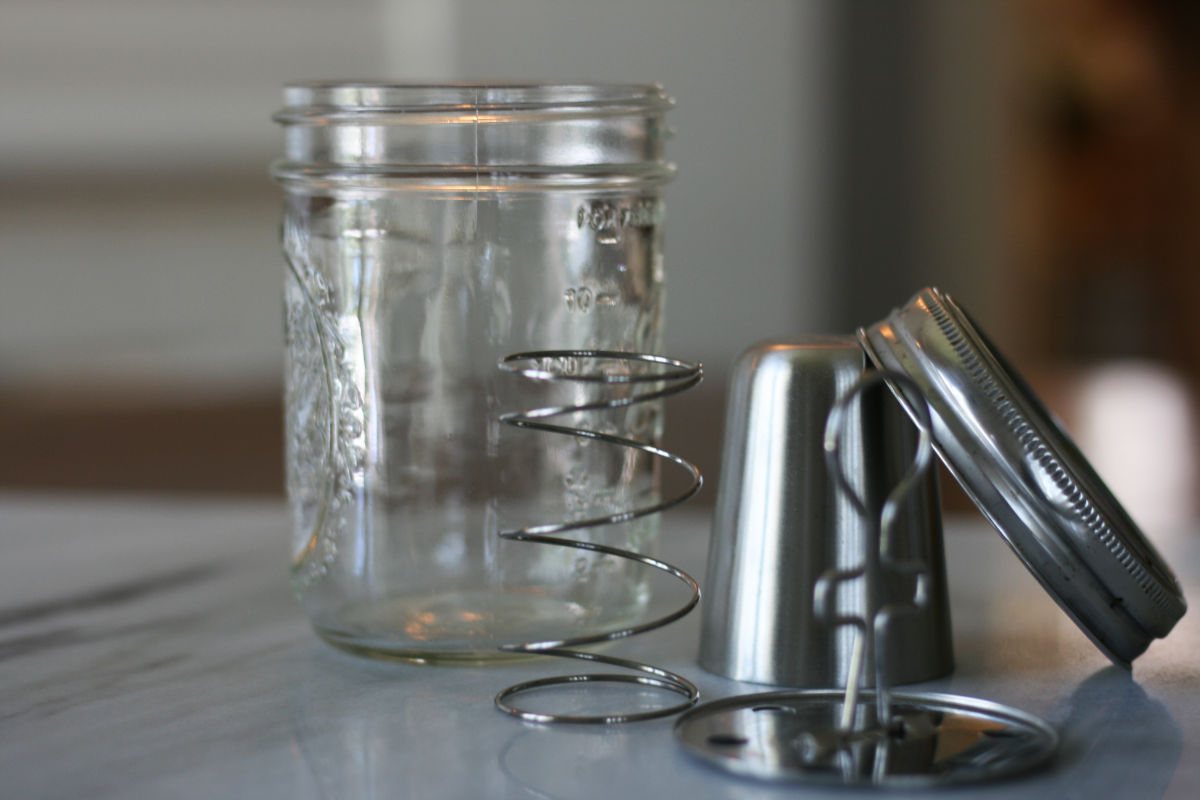
Ingredients
- 4 tsp. sea salt or pink Himalayan salt
- 4 cups filtered water
- for Jar 1
- 4 oz. organic carrots, peeled and halved length-wise
- 4 oz. organic green and/or purple beans
- 1/4 organic red onion, thinly sliced
- 1/2 lemon, thinly sliced medallions
- 2 Tbsp. fresh ginger, thinly sliced
- 1/2 tsp. red pepper flakes
- 4 cloves of garlic, sliced
- 1 tsp. of organic coriander seeds
- 1/2 tsp. whole black peppercorns
- 1/2 Serrano pepper, thinly sliced (optional)
- for Jar 3
- 4 organic Persian cucumbers, sliced 1/4” medallions
- 2 sprigs fresh organic dill
- 1/4 organic red onion, thinly sliced
- 1/2 tsp. whole black peppercorns
- 1/2 tsp. red pepper flakes
- 1 bay leaf
- 1 tsp. brown or black whole mustard seeds
- 4 cloves of garlic, sliced
Directions
Preparation
- Thoroughly wash all the cutting boards, knives, Mason/Ball Jars and other equipment. I would spend some extra time here
- Rinse all the vegetables & herbs
- Slice them per the ingredients list
Brine
- For every cup of filtered water, add 1 tsp. salt
- Stir until dissolved
- Make around 3-4 cups of brine
Packing Jar 1
- In a Mason jar, start with the spices & serrano peppers
- Layer with lemons, ginger, garlic, and red onion slices
- Stand carrots and beans vertically to pack.
- Slowly, pour the brine into the jar. Fill the brine up to the shoulder of the jar. Please make sure that the brine covers all the vegetables
- Close the jar with your fermenting tool and allow to sit for 10-12 days in 70-85F (20-30C) temperature
Packing Jar 3
- In a Mason jar, start with the spices, dill, and the bay leaf
- Layer with garlic, and red onion slices
- Layer cucumber medallions
- Slowly, pour the brine into the jar. Fill the brine up to the shoulder of the jar. Please make sure that the brine covers all the cucumbers
- Close the jar with your fermenting tool and allow to sit for 10-12 days in 70-85F (20-30C) temperature
The wait
- First few days, you should see some bubbles as the bacteria feed on the vegetables and produce gases
- Open the jar every few days. You should smell the sour, vinegary but pleasant aroma. Trust your nose, if it smells rotten, then it has gone bad. Stop. Throw away, and wash the jars - well. Start again. Sorry!
- In about 10-12 days, the vegetables should be ready. Readiness is a personal preference - lower it stays in, sourer it is going to get
Storage
- Once the pickles are ready, remove the fermentation tools, and put on the lid
- Move the pickles in the refrigerator to slow down the fermentation
Use
- Use as an appetizer, as a side, on salads, on tacos, etc.
- Save the liquid and use it with your cocktails as a mixer

